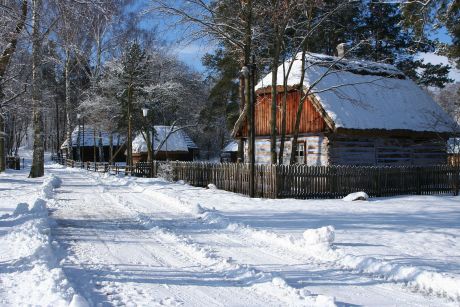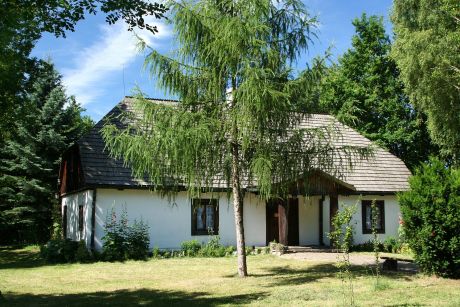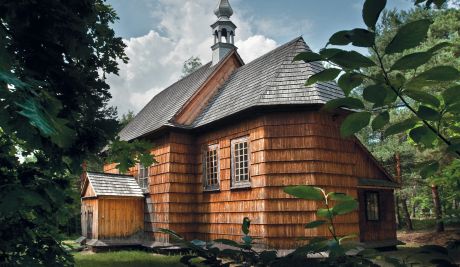This cottage is an example of one of the simplest interior arrangements. The system vestibule – chamber was the form which initiated all of the further forms. The poorest inhabitants of the village applied such solutions even until the middle of the 20th century. The building has walls made of beams in a quoin structure. It is covered with a hip thatched roof..
At first the object was used as a granary, which consisted of two chambers, an attic and a basement. At the beginning of the 20th century it was reconstructed into a residential area with extended kitchen and heating devices: kitchen equipment, bread oven, heating stove. Above the kitchen the inhabitant mounted a cap which was supposed to carry away the gases generated by cooking meals and the smoke of chunks of wood taken out of the bread oven. The interior is arranged as a rural worker’s house, a female herbalist from the turn of the 20th century. The whitewashed chamber is equipped only with indispensible devices: a bed, two chairs, benches, a chest for clothes and a shelf with plates. Upon the stove one may find cooking pots. Above the bed there are religious paintings, whereas the table under the window is occupied by “the holy corner”. The cottage’s decoration is constituted by paper spiders hanging under the ceiling. The vestibule, which also serves as a warehouse, is equipped with small objects – buckets; tools for work in the garden – hoes and flax processing tools – sticks and brakes. The profession of the cottage’s inhabitant is confirmed by drying herbs hanging everywhere.











